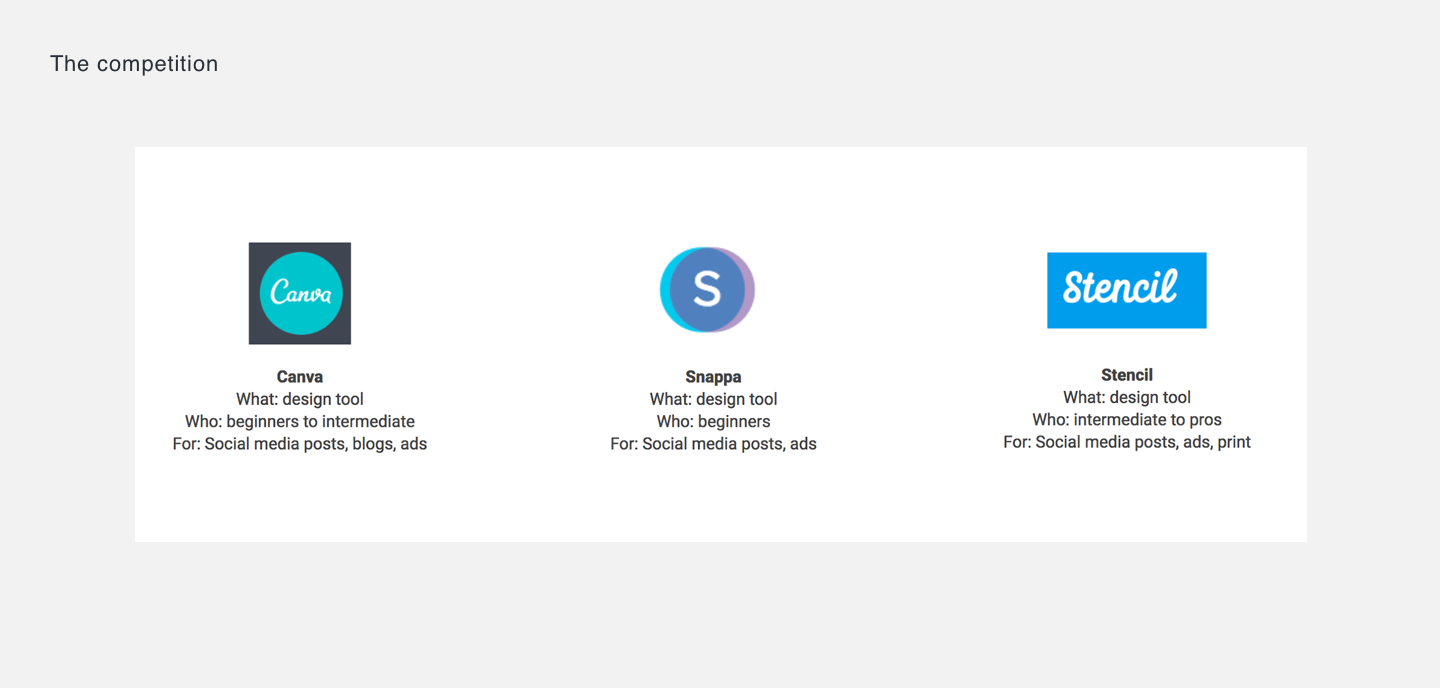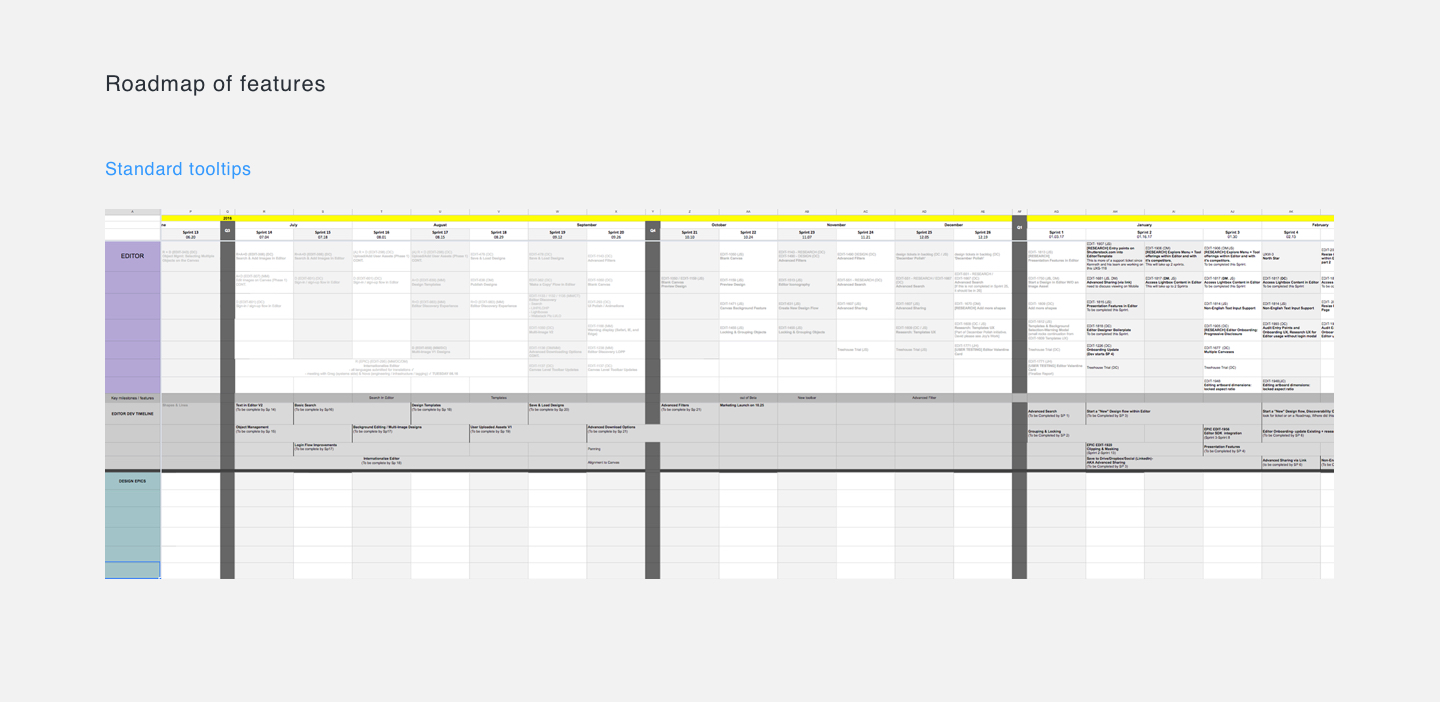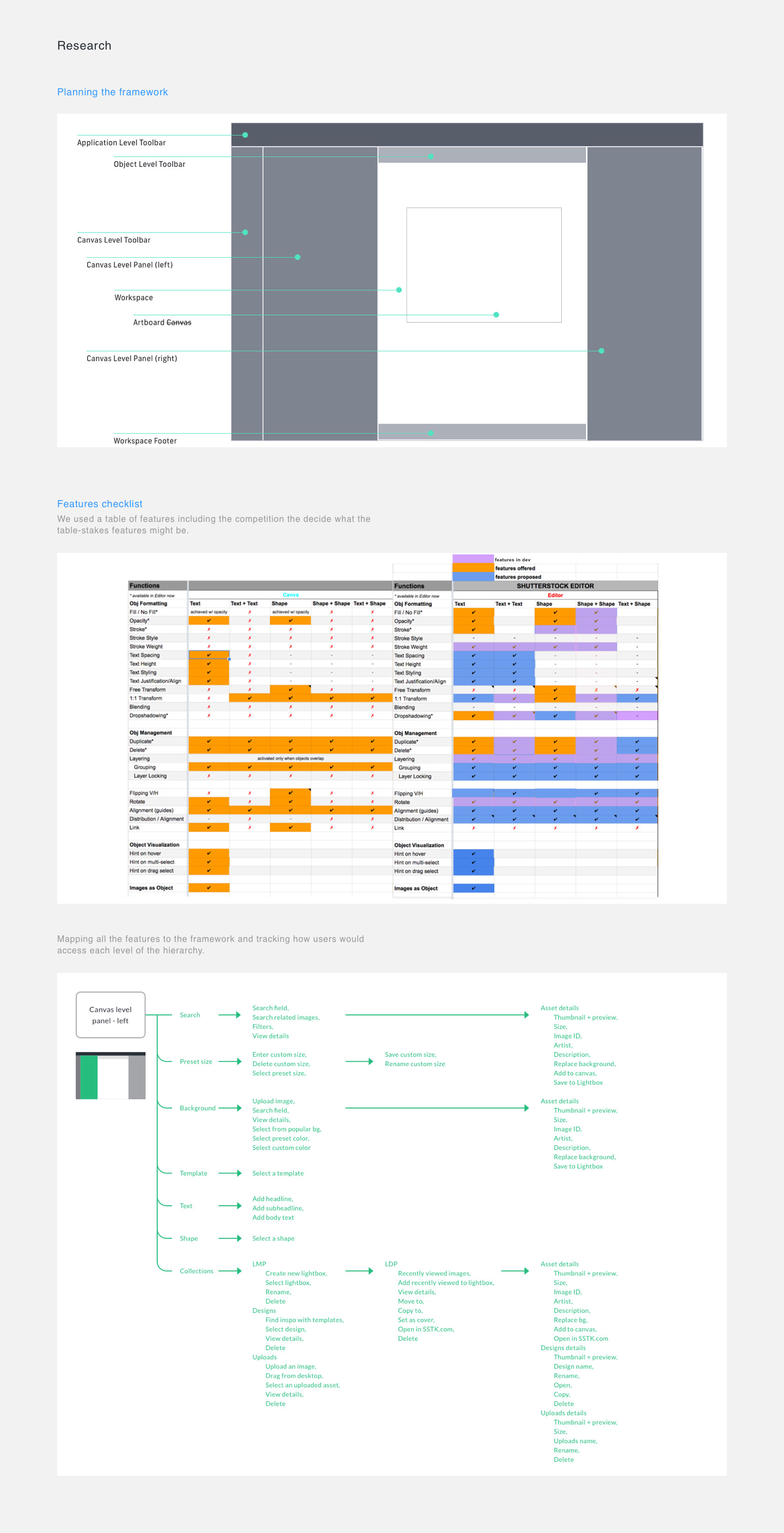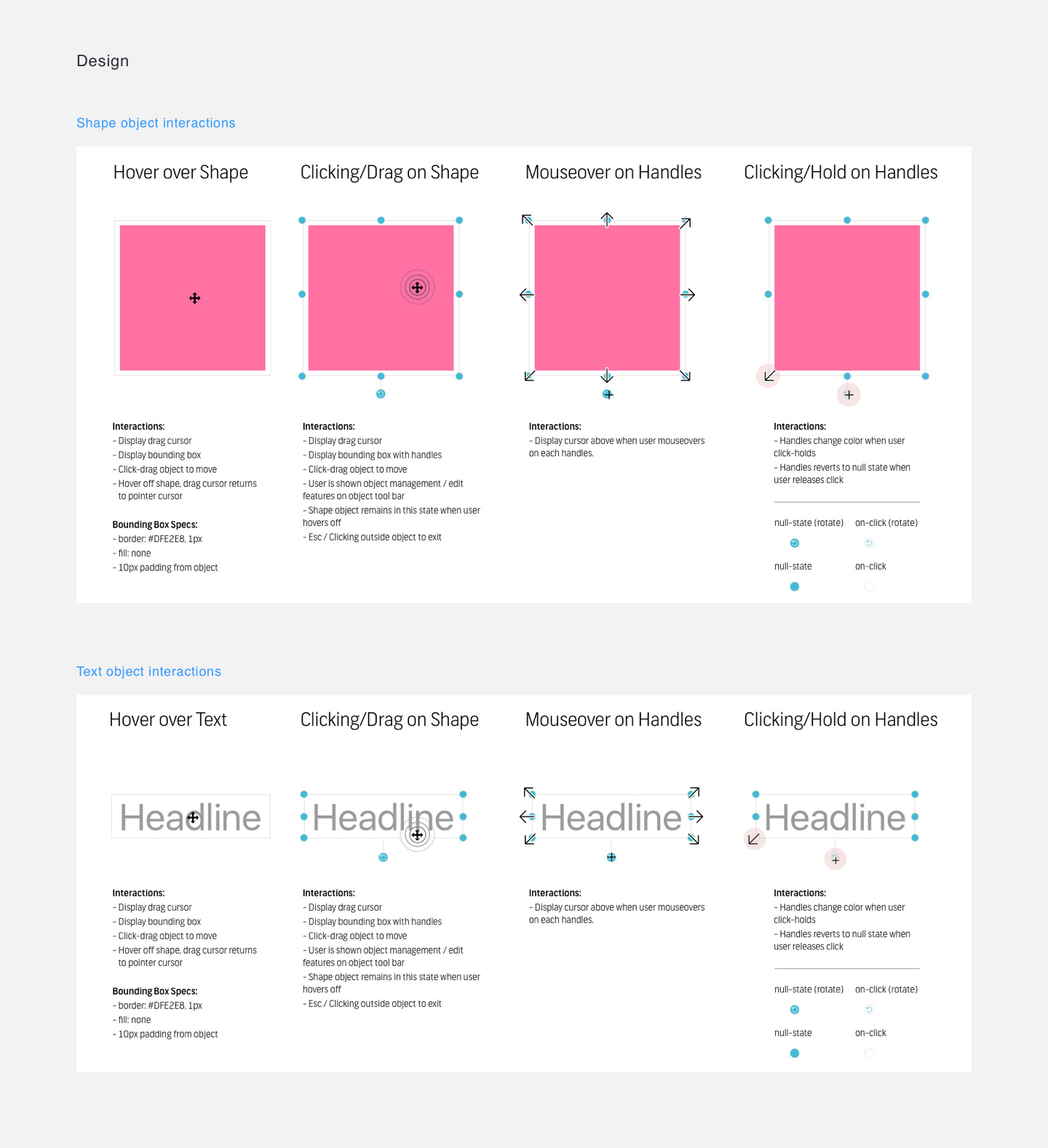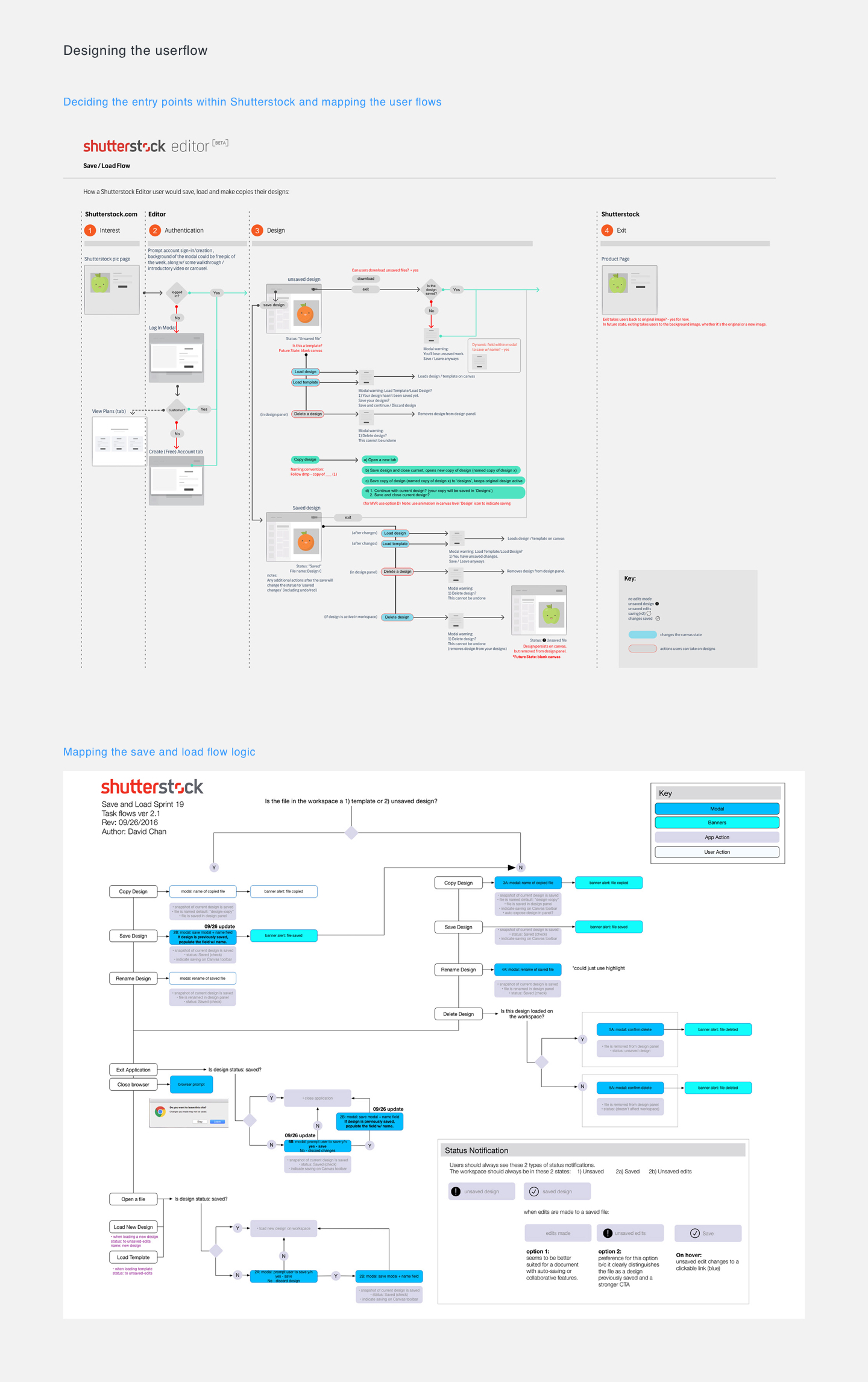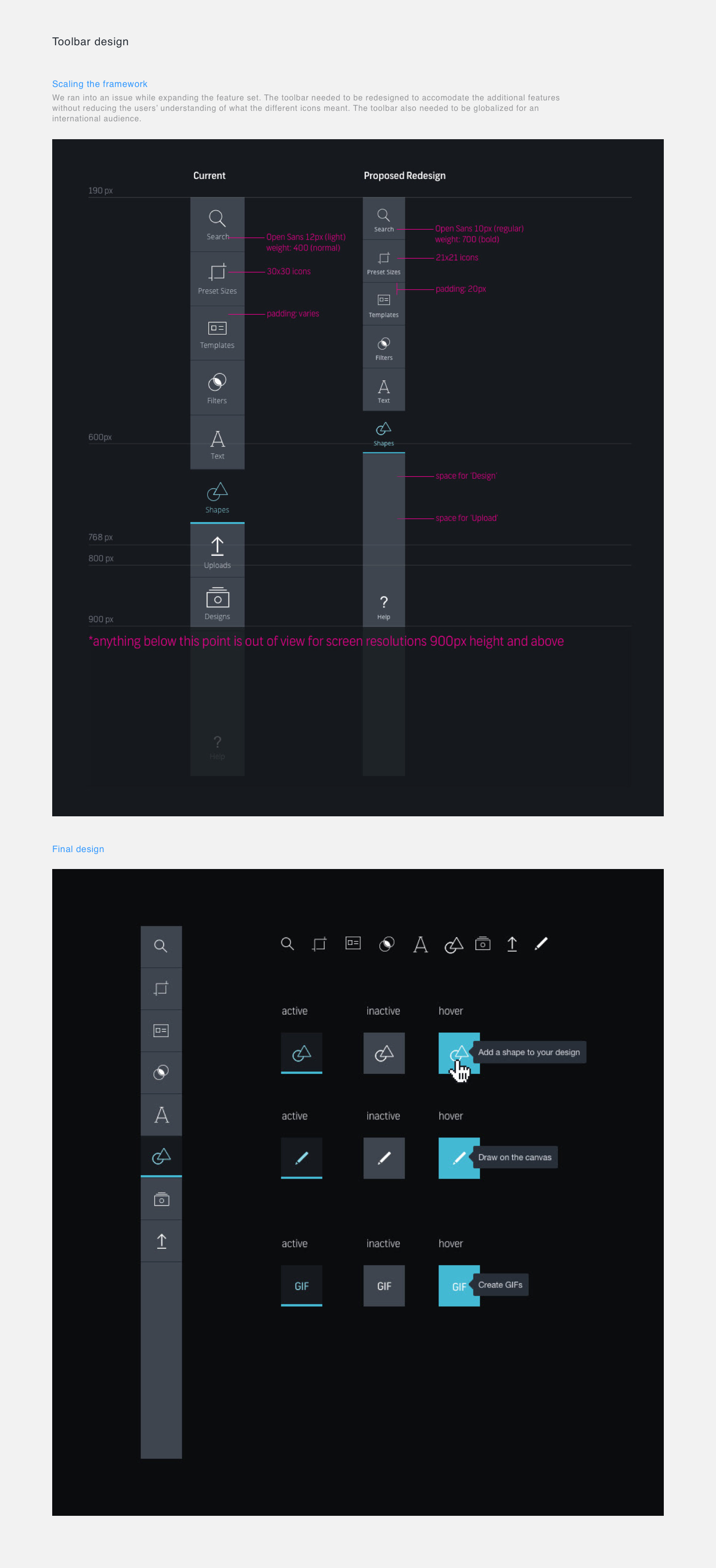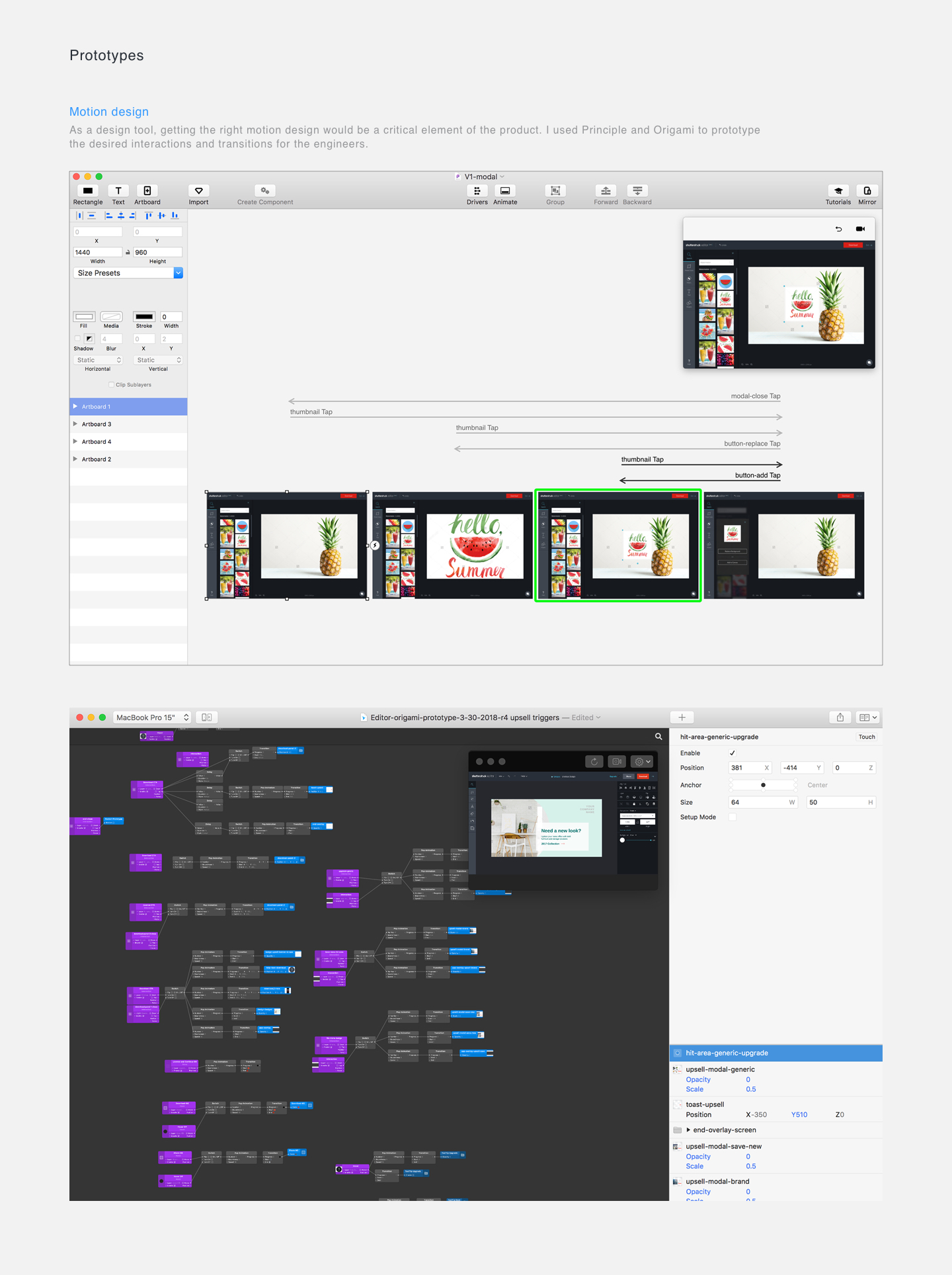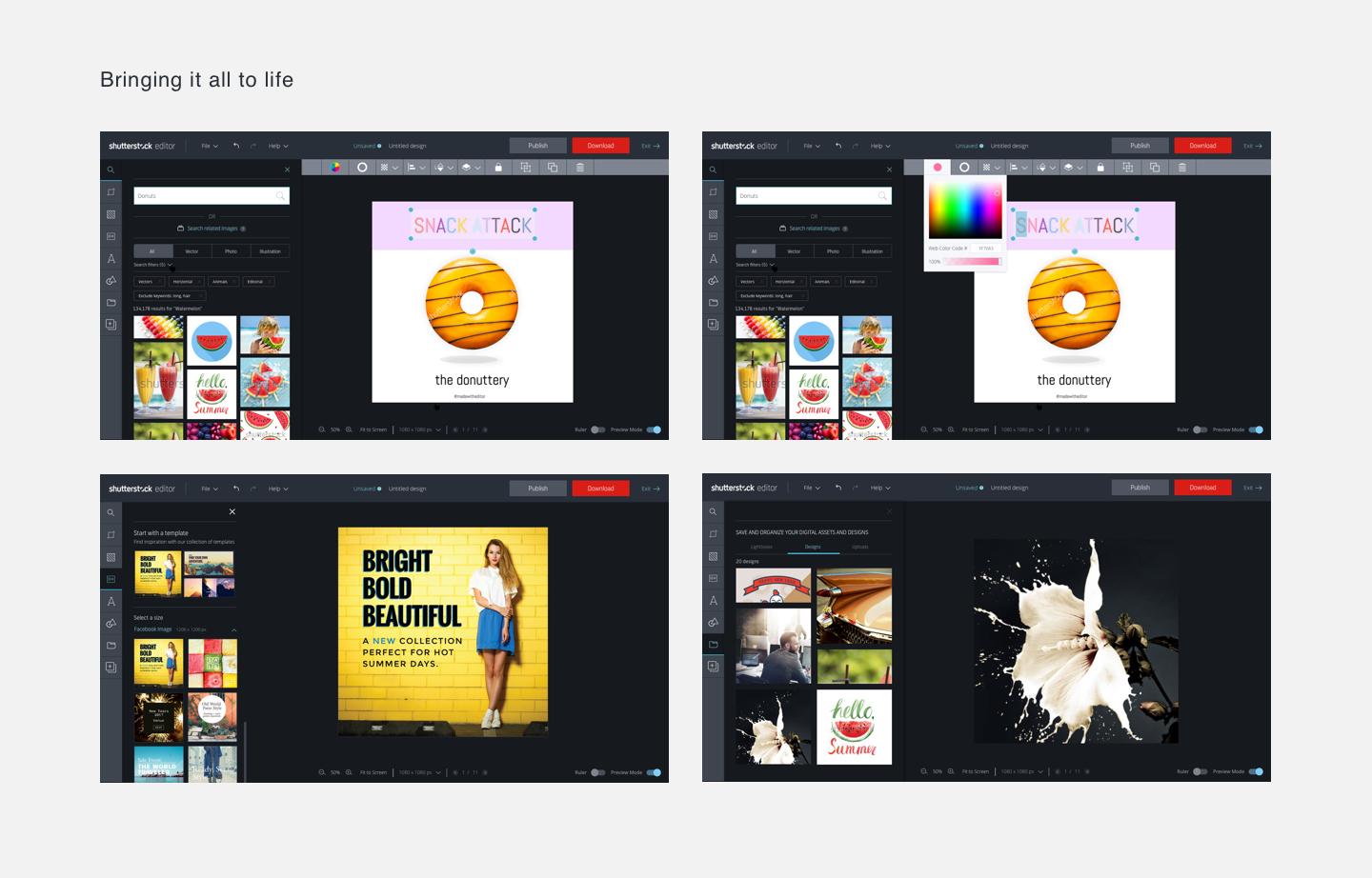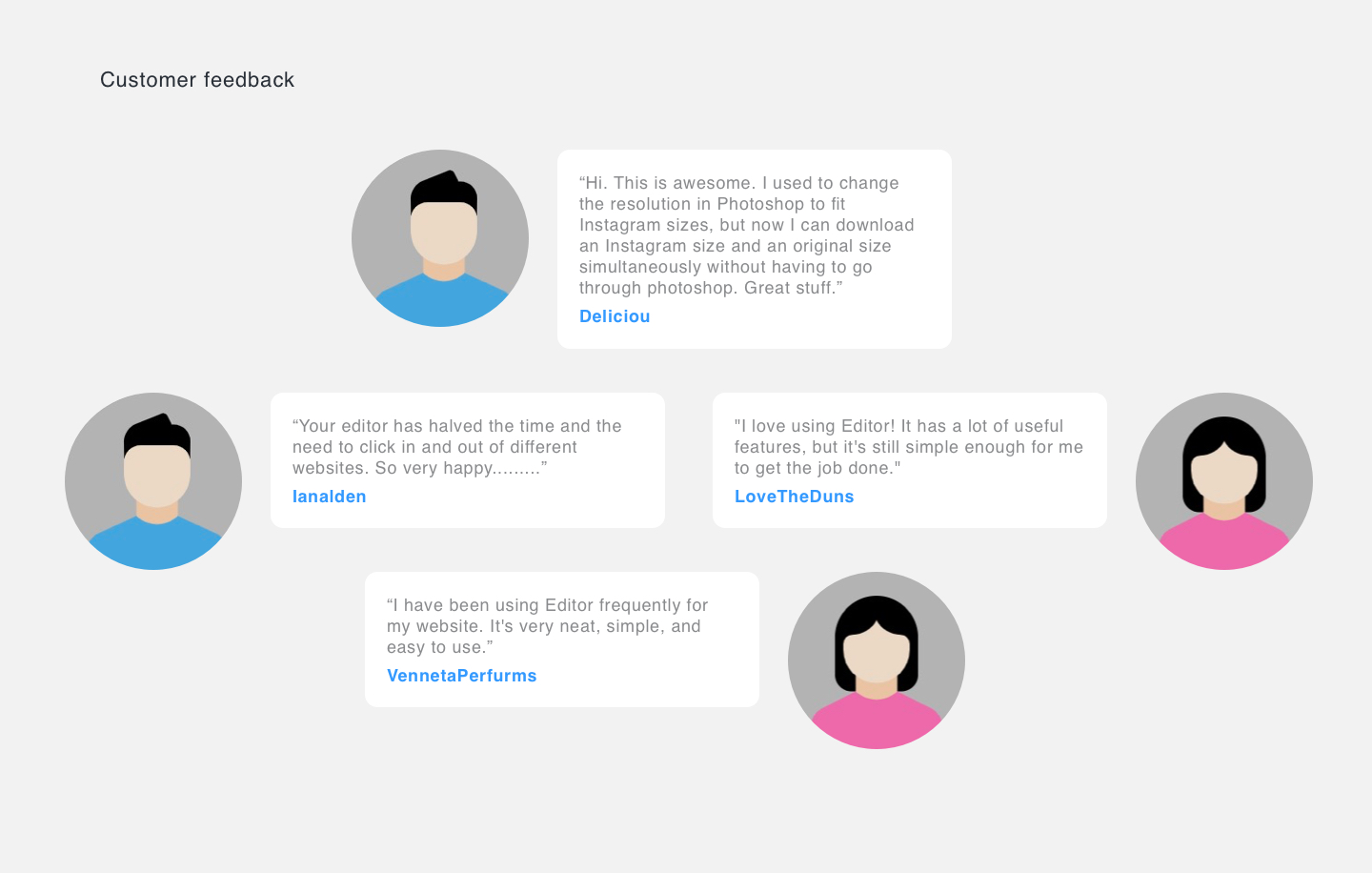My Role:
As design lead on the Editor project, I worked closely with associate designers and partnered closely with product owners to define the vision and gathered user feedback that informed product decisions.
Insight and Ideation:
I worked with the product manager to define requirements and applied design thinking to uncover opportunities, customer pain points and provided solutions which solved customer problems.
UX Strategy and Vision
I presented research findings to leadership, provided analysis and design concepts that helped bridge the gap between business, product, and engineering. My efforts inspired the company by giving voice to the customer and created more empathy necessary to build better products.
Planning and Definition
I collaborated with internal and external stakeholders to ensure business needs and user goals were coalesced into an aligned strategy. I coordinated with engineers, visual designers, and copywriters and communicated issues as they arose to meet deadlines.
Collaboration and Coordination
I collaborated with creative partners on the design systems team and contributed new design patterns to Shutterstock's Studio design system. I upheld a cadence of design reviews with 8 other core platform designers to ensure a consistent Shutterstock user experiences.
Execution and Validation
I paired with engineers from concept through delivery. Throughout the design review process, we collaborated to iron out edge cases. I monitored KPI's of released features that leveraged new data to iterate towards better solutions.
Leadership
I designed and crafted each feature with attention to detail and provided developer specifications for handoffs. I partnered closely with engineering through the use of design review sessions to ensure delivery of a high-quality product. To validate my designs, I ran user tests to remove uncertainties and presented my findings to galvanize the team towards usable solutions.
